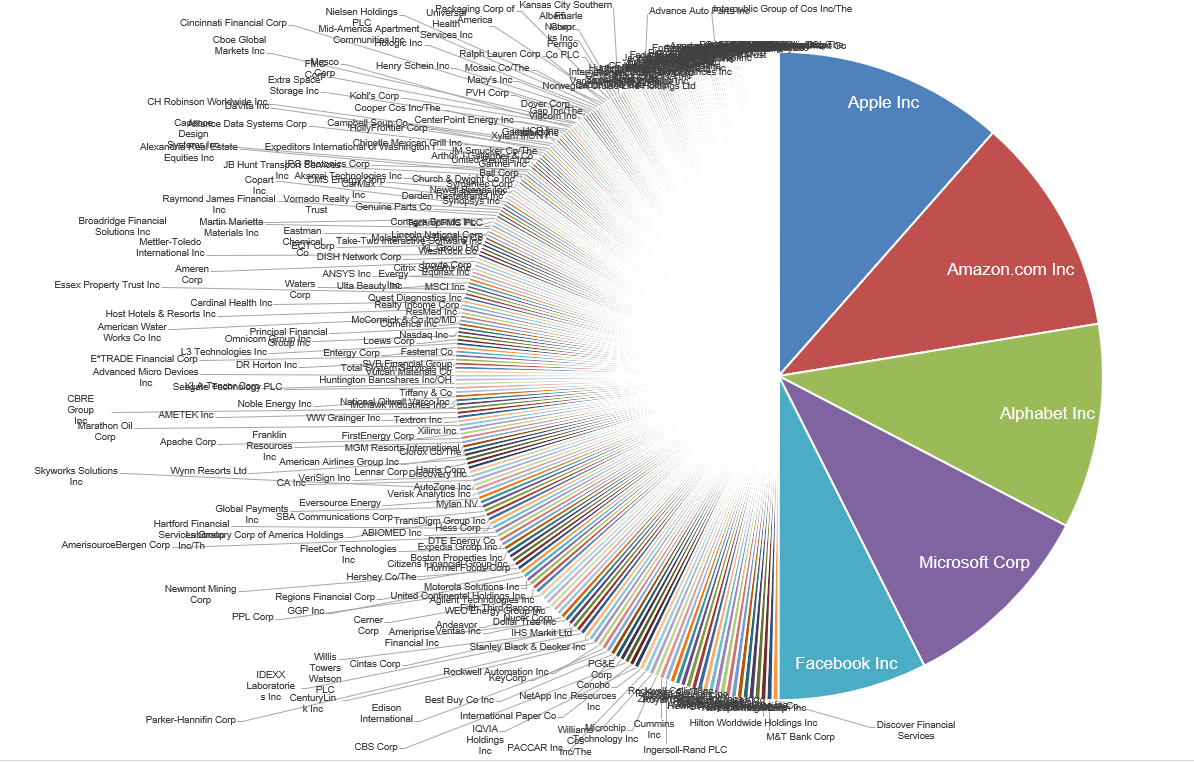Investment A has a YTD ROR of 6.15%. Investment B has a YTD ROR of 4.32%. Which one is the S&P 500?
Answer? Both.
How can this be? Investment A was measured using the cap-weighted methodology where the larger the company and stock price the more impact it has. Investment B was measured using an equal-weighted methodology where each of the 500 stocks has an identical impact.
Why does this matter? Consider the following:
The 5 largest stocks of the S&P 500 (Alphabet (Google), Apple, Amazon, Microsoft and Facebook) represent a similar market cap to the bottom 282 stocks. On a day where Alphabet is hit with a $5 billion fine and the stock sells off the S&P is likely to decline. Conversely a hypothetical tripling in the stock of Yum! Brands (KFC, Pizza Hut and Taco Bell) with a market cap of over $25 billion will barely move the needle.
Said another way making an investment in a mutual fund or ETF tracking the S&P 500 necessarily means making an investment in high-flying, high-risk, volatile tech stocks . . . and just 5 of them at that. Now that’s a concentrated position. And you thought you were buying 500 stocks? Interesting.
Plenty of real companies with real businesses are overshadowed by index methodology. Something to keep in mind when using the mental shortcut that the return on the S&P is indicative of the return on the overall market.


Leave A Comment